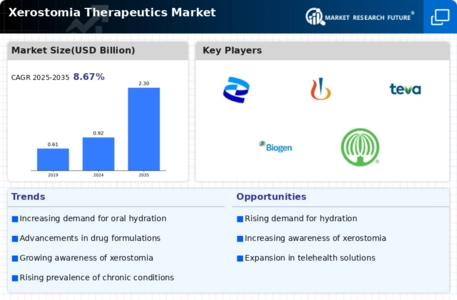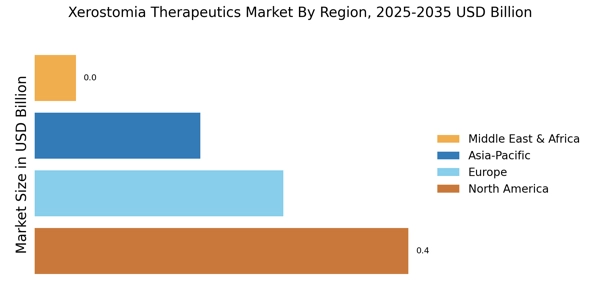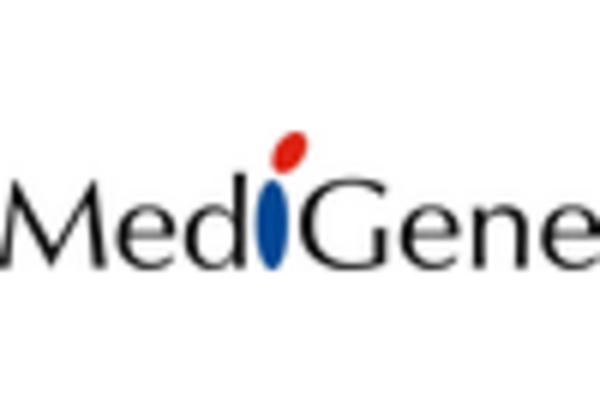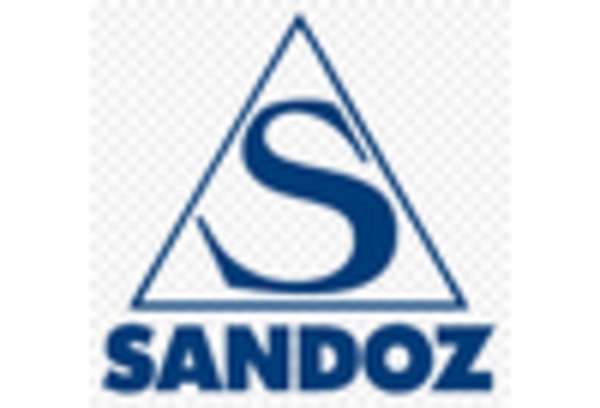Growing Awareness and Education
There is a notable increase in awareness and education regarding xerostomia and its implications, which is driving the Xerostomia Therapeutics Market. Healthcare professionals are becoming more informed about the condition, leading to better diagnosis and treatment options for patients. Public health campaigns aimed at educating individuals about the causes and effects of dry mouth are also gaining traction. This heightened awareness is likely to result in more patients seeking treatment, thereby expanding the market. Additionally, as patients become more knowledgeable about available therapies, they may actively seek out specific products, further influencing market dynamics. The emphasis on education is expected to foster a more proactive approach to managing xerostomia, ultimately benefiting both patients and healthcare providers.
Increasing Prevalence of Xerostomia
The rising incidence of xerostomia, often associated with various medical conditions such as diabetes, Sjogren's syndrome, and cancer treatments, is a primary driver for the Xerostomia Therapeutics Market. As the population ages, the prevalence of these conditions is expected to increase, leading to a higher demand for effective therapeutic solutions. Recent estimates suggest that approximately 30% of older adults experience some form of dry mouth, which underscores the urgent need for innovative treatments. This growing patient population is likely to propel the market forward, as healthcare providers seek to address the discomfort and complications associated with xerostomia. Consequently, pharmaceutical companies are investing in research and development to create new products tailored to this demographic, further stimulating market growth.
Regulatory Support for New Treatments
Regulatory bodies are increasingly supportive of the development and approval of new treatments for xerostomia, which is positively impacting the Xerostomia Therapeutics Market. Streamlined approval processes and incentives for innovative therapies are encouraging pharmaceutical companies to invest in research and development. For example, the designation of certain products as orphan drugs can expedite their path to market, particularly for treatments targeting rare conditions associated with xerostomia. This regulatory environment not only facilitates the introduction of new therapies but also enhances competition within the market, leading to a broader range of options for patients. As more products gain approval, the market is likely to experience accelerated growth, driven by the availability of diverse therapeutic solutions.
Rising Demand for Personalized Medicine
The trend towards personalized medicine is becoming increasingly relevant in the Xerostomia Therapeutics Market. Patients are seeking treatments that are tailored to their specific needs and conditions, which is prompting manufacturers to develop more individualized therapeutic options. This shift is supported by advancements in genomics and biotechnology, allowing for a better understanding of the underlying mechanisms of xerostomia. As a result, therapies that target specific patient profiles are emerging, potentially leading to improved efficacy and patient satisfaction. The demand for personalized approaches is likely to drive innovation within the market, as companies strive to create products that align with the unique characteristics of their patient populations. This focus on customization may also enhance treatment adherence, as patients are more likely to engage with therapies that resonate with their individual experiences.
Advancements in Therapeutic Technologies
Technological advancements in the development of xerostomia treatments are significantly influencing the Xerostomia Therapeutics Market. Innovations such as bioengineered saliva substitutes and novel drug formulations are emerging, providing patients with more effective and longer-lasting relief from dry mouth symptoms. For instance, recent developments in mucoadhesive formulations have shown promise in enhancing the retention time of therapeutic agents in the oral cavity, thereby improving patient outcomes. Furthermore, the integration of smart technologies, such as mobile applications for monitoring symptoms and treatment adherence, is likely to enhance patient engagement and satisfaction. These advancements not only improve the quality of life for individuals suffering from xerostomia but also create new market opportunities for manufacturers, as they strive to meet the evolving needs of patients.



















Leave a Comment